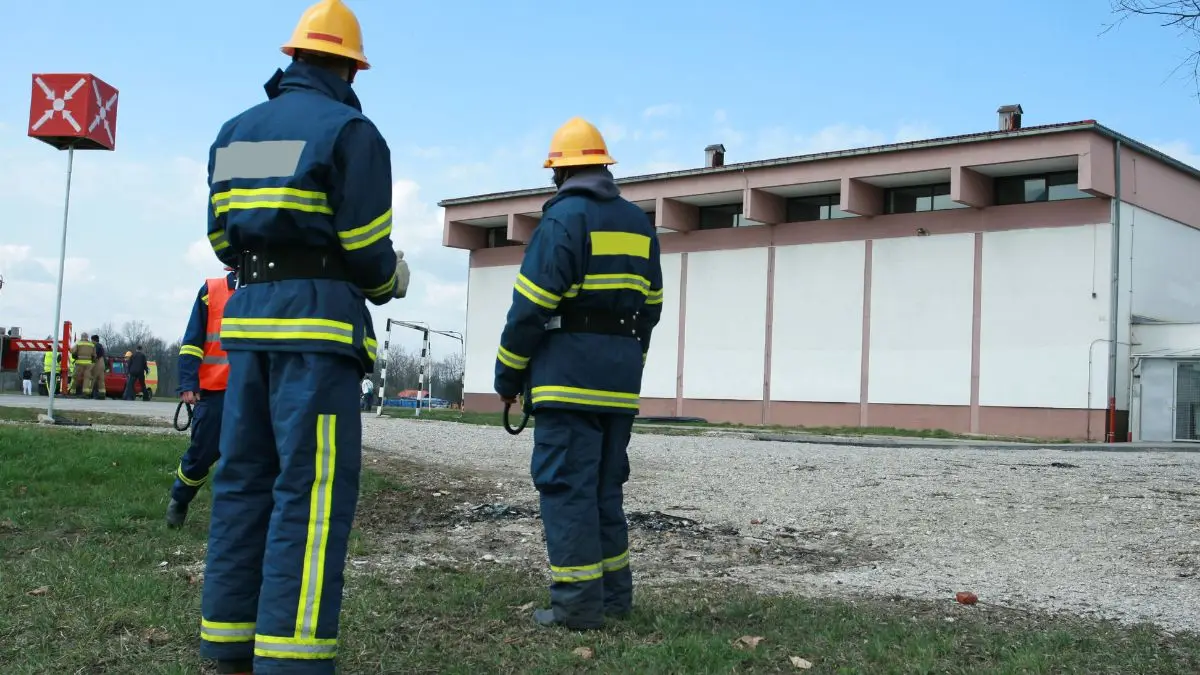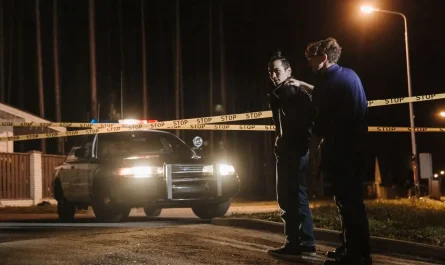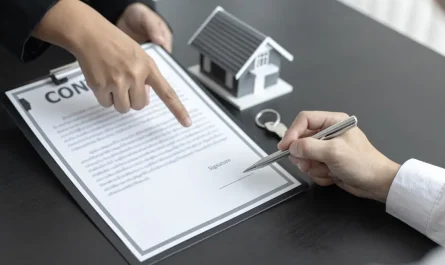9 Dead After Five Alarm Fire at Gabriel House In Massachusetts
I want to take a moment to walk you through what actually happened at Gabriel House on Sunday night—not just headlines, but what it felt like.
Just after 9:30 p.m., the fire alarms started blaring at this assisted living facility on Oliver Street in Fall River, Massachusetts. Flames were already tearing through the front of the building by the time firefighters arrived. Smoke was so thick it poured out of the main entrance. And inside? Dozens of residents—some in wheelchairs, some fresh off their nightly meds—were trapped in their rooms.
People were literally hanging out of third-story windows, waving their arms and screaming for help. First responders—many of them off-duty—rushed into the chaos, pulling residents down ladders, carrying others in their arms, and doing everything they could before the smoke took more lives.
In the end, nine people didn’t make it. Another was left in critical condition. About 30 residents were hospitalized. Five firefighters were injured but have since been released.
This wasn’t just a fire. It was a gut punch for the entire Fall River community.
You hear about nursing home fires on the news, and it feels distant—until you realize how easily this could be your mother, your grandfather, someone you love who relies on others for safety when it matters most.
What It Was Like Inside That Burning Building?
Let me walk you into that terrifying moment. Imagine this—you’re lying in bed after taking your meds, maybe dozing off, when suddenly your room starts to glow orange. You hear shouting, alarms, and the unmistakable sound of panic.
I want you to picture what Fall River firefighters saw when they got to Gabriel House. According to
CBS News
, flames were blasting through the main entrance. Smoke was pouring out. And there were people—grandparents, veterans, elders—hanging from the windows, waiting to be saved.
Firefighters charged in. Some residents were physically carried out by their hands and feet. “We need a medic!” someone screamed. Others were lowered by ladders, barely able to breathe.
You and I both know—it takes unbelievable courage to run into that kind of chaos. And yet over 50 firefighters did, including 30 who came in off-duty. That kind of bravery doesn’t just happen—it’s built into people who care.
This story probably made you think—how safe is the place where your loved one stays? Have you ever had a scare like this, or know someone who has? Drop a comment and share your thoughts. Stories like yours help others stay alert.
Victims and Survivors – Lives Lost, Stories Left Behind
Let me tell you something that most headlines miss: these weren’t just “nine dead.” These were mothers, fathers, neighbors—people who had stories, routines, favorite chairs.
From the
WCVB report
, we know that one of the victims was 86-year-old Eleanor Willet. Her son and grandson are still in disbelief, trying to make sense of what happened. And you know what? So would you and I if this happened in our family.
The Bristol County District Attorney also identified:
- 64-year-old Rui Albernaz
- 61-year-old Ronald Codega
- 69-year-old Margaret Duddy
- 78-year-old Robert King
- 71-year-old Kim Mackin
- 78-year-old Richard Rochon
And two others—a 70-year-old woman and 77-year-old man—haven’t even been named yet. That’s how fresh and raw this is.
There was also Brenda Andrade—she survived, but she’s in critical condition with burns on 50% of her body. Her family hasn’t even been able to see her yet.
This isn’t some abstract tragedy. This is your neighbor. My aunt. Anyone’s family. And that’s exactly why it hits so hard.
Emotional recovery is often overlooked, especially after traumatic displacements. In another case, when
a home in Iowa caught fire on a Friday evening
, residents were temporarily relocated—and some reported long-term anxiety tied to that single night.
Was Gabriel House Safe? What You Deserve to Know
If you’re asking yourself, “How could this even happen in a licensed care home?”—you’re not alone. I’m asking it too.
Gabriel House wasn’t a fly-by-night operation. It was a non-profit, opened in 1999, with 100 single-bed units and 70 residents living there before the fire. It even had sprinklers and alarms installed.
But here’s what makes me pause—and should make you think, too:
- The building’s elevator was broken for eight months. It was only recently fixed. Imagine being in a wheelchair on the third floor when smoke starts filling the hallway. What’s your escape route?
- Firefighters said window air conditioners made it harder to get people out.
- Oxygen tanks were in the facility, though the fire chief says they weren’t a major factor. Still—oxygen and fire aren’t exactly a good combo.
- The last official inspection? October 15, 2024. Next one? Scheduled for this October.
I’m not pointing fingers. But if your loved one lives in a care home, you and I both deserve answers like these—before a tragedy happens.
Several discussions about care home safety and emergency response protocols have been circulating recently in a few emergency news alert groups on WhatsApp. One such update mentioned cases similar to Gabriel House, where delayed inspections or faulty alarms became critical factors. Worth checking if you stay tuned to fire and safety alerts.
What Caused the Fire? And Who’s Investigating It?
Right now, there’s no clear answer to what started the fire. But I want to tell you what we do know—and what we don’t.
Fire Chief Jeffrey Bacon says the damage was limited to one wing of the building, but smoke filled all three floors. That’s important because—as Bacon himself said—“Smoke kills more people than fire does every day in America.”
There were alarms ringing during the press conference Monday morning, but it’s still unclear whether they were working when the fire broke out. And you and I both know—a few minutes of delay with alarms can mean the difference between survival and tragedy.
The building is now being combed through by:
- The Fall River Fire Department
- The State Fire Marshal’s Office
- Code compliance officers
- Investigators from the DA’s office
Right now, they believe the cause is not suspicious—likely accidental. But we still don’t know whether it was electrical, mechanical, or something else entirely.
You and I need more than just a cause—we need accountability and clarity so this doesn’t happen again.
A similar incident unfolded recently where
firefighters in White Center battled a blaze at a two-story home
—a stark reminder of how fast smoke can take over when structural layout and airflow work against responders.
Could Better Staffing Have Saved More Lives?
Let me ask you something I’ve been asking myself since this tragedy: Could more people have survived if the Fall River fire department had just one more firefighter on each truck?
The union thinks so—and honestly, so do I.
Edward Kelly, president of the International Association of Firefighters, didn’t hold back. He said,
“Lives would have been saved if the Fall River Fire Department were adequately staffed.”
Let that sink in.
According to national safety standards (NFPA), each fire truck crew should have at least four firefighters. But in Fall River? Most only had three.
The fire department did everything they could with what they had. Over 30 off-duty firefighters showed up to help. That tells me they wanted to do more—they just weren’t staffed for it.
You and I both know that when minutes matter, bodies matter.
The mayor said the department was given what it asked for—but does that excuse anything? Maybe. Maybe not. That’s the debate unfolding now.
But if you’re reading this and thinking, “Wait, my city’s fire trucks might be under-staffed too?”—then it’s already done its job.
In Iowa,
a cooking-related fire in an apartment left one resident injured
, and the quick response prevented it from spreading. But just like Fall River, the outcome could’ve been worse had first responders arrived moments later.
What Happened to the Survivors—and Where Are They Now?
This part hits differently—because after the fire trucks left and the cameras shut off, the real work began: helping the people who survived.
I want you to picture this: Elderly residents with walkers and IVs, some in nightgowns, sitting on folding chairs at a temporary shelter. Disoriented. Cold. Grieving. Alive.
At least 35 survivors were cared for at a shelter set up at the Timao Center on Bay Street. Some were later moved to nearby care facilities. Others are still being treated in hospitals.
St. Anne’s Hospital even turned their chapel into a crisis information center. If your loved one lived at Gabriel House, you could walk across the street and talk to someone—or call 508-674-5741.
And let me tell you—Fall River showed up. Neighbors brought clothing, food, blankets. Faith groups offered spiritual support. Total strangers sat with grieving families just to say, “I’m here.”
That’s what gives me hope—and I think it will give you some too.
What Can You and I Learn From This—Before It Happens Again?
Here’s the truth you and I can’t ignore: what happened at Gabriel House could happen anywhere.
That’s why I want to walk you through some very real takeaways—because if we don’t learn from this, we’re just waiting for the next headline.
-
Ask questions about inspections
. Gabriel House was inspected in October 2024 and wasn’t due for another until this fall. But is your loved one’s facility up to date? Are their reports public? Ask. -
Don’t assume alarms work
. Even though alarms were sounding during the news conference, no one knows if they went off when it mattered. You and I need to ask care homes: “When was your last alarm drill?” -
Elevators matter.
That one elevator that was broken for 8 months? It could have been a death sentence. You deserve to know: What’s the backup plan if your loved one is on the top floor? -
Push for fire staffing reform.
This isn’t just a Fall River issue. Firefighter understaffing is common across the country. Call your local rep. Show up at a town hall. It’s your tax money, after all. -
Keep emergency numbers ready.
Whether it’s 911, poison control, or your care facility’s direct line—print it, post it, save it.
And if you’re sitting there feeling helpless—like I did when I first read the names of the victims—just know this: you’re not.
You can act today. And that action might just be the reason someone makes it out next time.
Final Thoughts
You and I both know this wasn’t just a tragic fire—it was a wake-up call.
We owe it to the nine people who didn’t make it, and to the ones still recovering, to ask better questions, demand stronger safety, and never assume “it won’t happen here.” Because if there’s one thing Gabriel House taught us—it’s that seconds matter, systems fail, and silence costs lives.
Let’s not wait for another headline. Let’s be the reason it never gets written.
For more updates on fire safety, emergency response, and home disaster reports, visit
Home Incidents
category. Stay informed, stay protected.
Disclaimer:
This article is for informational purposes only and is based on publicly available sources and verified news reports. Details surrounding the fire are still under official investigation and may evolve over time. Always refer to local authorities or emergency services for the most accurate and up-to-date information.
Table of Contents
-
What It Was Like Inside That Burning Building?
-
Victims and Survivors – Lives Lost, Stories Left Behind
-
Was Gabriel House Safe? What You Deserve to Know
-
What Caused the Fire? And Who’s Investigating It?
-
Could Better Staffing Have Saved More Lives?
-
What Happened to the Survivors—and Where Are They Now?
-
What Can You and I Learn From This—Before It Happens Again?
-
Final Thoughts




